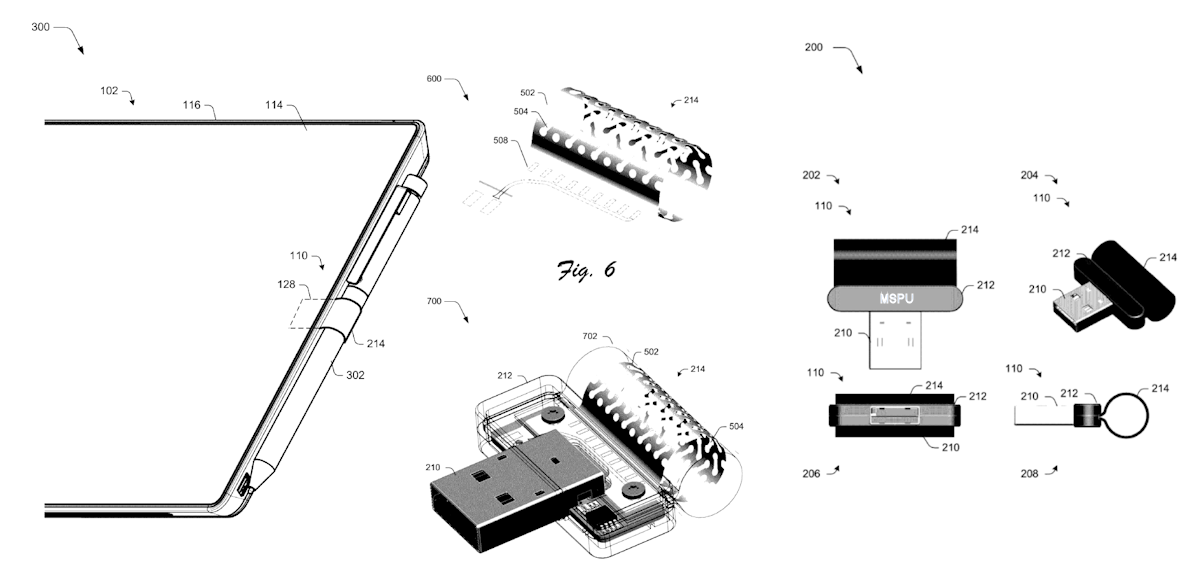Microsoft patents electric USB-powered Surface Pen Loop
3 min. read
Published on
Read our disclosure page to find out how can you help MSPoweruser sustain the editorial team Read more

Microsoft has a vision of natural computing which involves Pen and Touch, and all of their Surface line of PCs feature both technologies.
They in fact favour active pens for improved accuracy and features such as buttons and hover detection. Unfortunately this means the pens need power, with the devices currently being powered by a tiny AAAA battery which lasts about a year.
Microsoft also notes that storing a pen can be an inconvenience, with internal storage meaning increased complexity for a device, and with tethers and lanyards resulting in a device which can easily be caught on another.
Microsoft’s solution for the later has always been the Surface Loop, a fabric tube which attaches to the Surface keyboard.
Now in a new patent titled “Inductive Peripheral Retention Device” they propose a solution for both the former and the latter, proposing a USB-powered Surface Pen Loop which would attach to an errant USB port and which, via wires wrapped around inside the included loop, would charge an active pen via electrical induction, and which would provide a full charge in between half an hour to an hour.
Microsoft writes:
Inductive peripheral retention device techniques are described. In one or more implementations, an apparatus includes a plug configured to removably engage a communication port of a device to form a communicative coupling with the device. The plug is securable to and removable from the device using one or more hands of a user. The apparatus also includes a peripheral securing portion connected to the plug and configured to removably engage a peripheral device via an inductive element formed as a flexible loop and configured to form a communicative coupling between the peripheral device and the device.
In one or more implementations, inductance is detected of a flexible element configured to transfer power to a peripheral device via inductance. Responsive to a determination that the detected inductance is above a threshold, a first power mode is utilized in which a first amount of power is provided to the flexible element. Responsive to a determination that the detected inductance is below a threshold, a second power mode is utilized in which a second amount of power is provided to the flexible element that is less than the first amount of power.
In one or more implementations, an apparatus includes a single ferrous element formed as a single integral piece having a middle portion having a diameter about an axis that is less than a diameter of opposing ends of the single ferrous element along the axis and a coil wrapped around the middle portion such that the coil and the single ferrous element form an inductive coil that is substantially rotationally invariant around the axis when charging
It is of course not known if Microsoft plans to manufacture this interesting peripheral, but due to its non-integrated nature Microsoft could of course still manufacture it as a premium add-on for those who are happy to pay for something a little special.
The full patent can be read here.
What do our readers think of this interesting idea?










User forum
0 messages